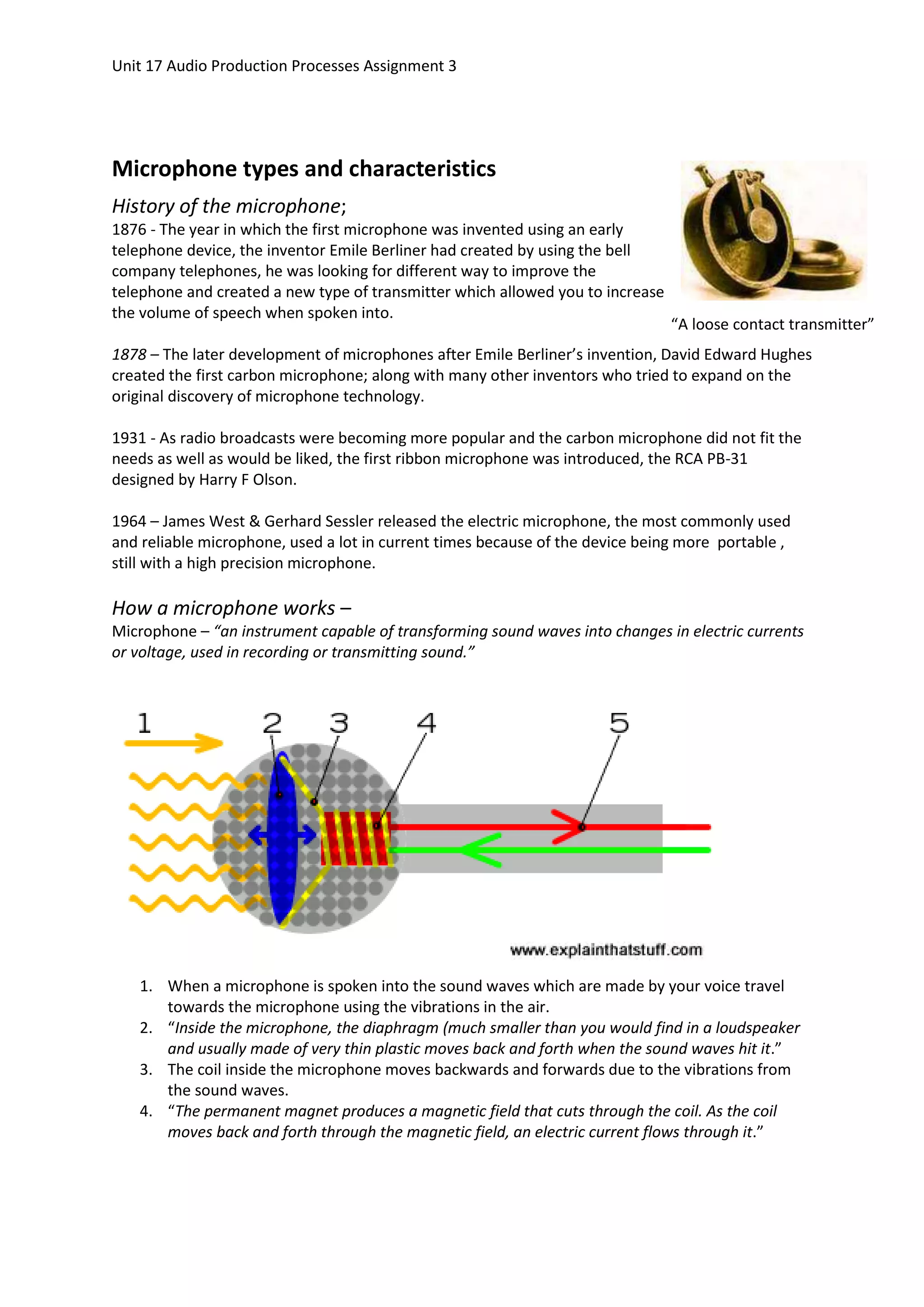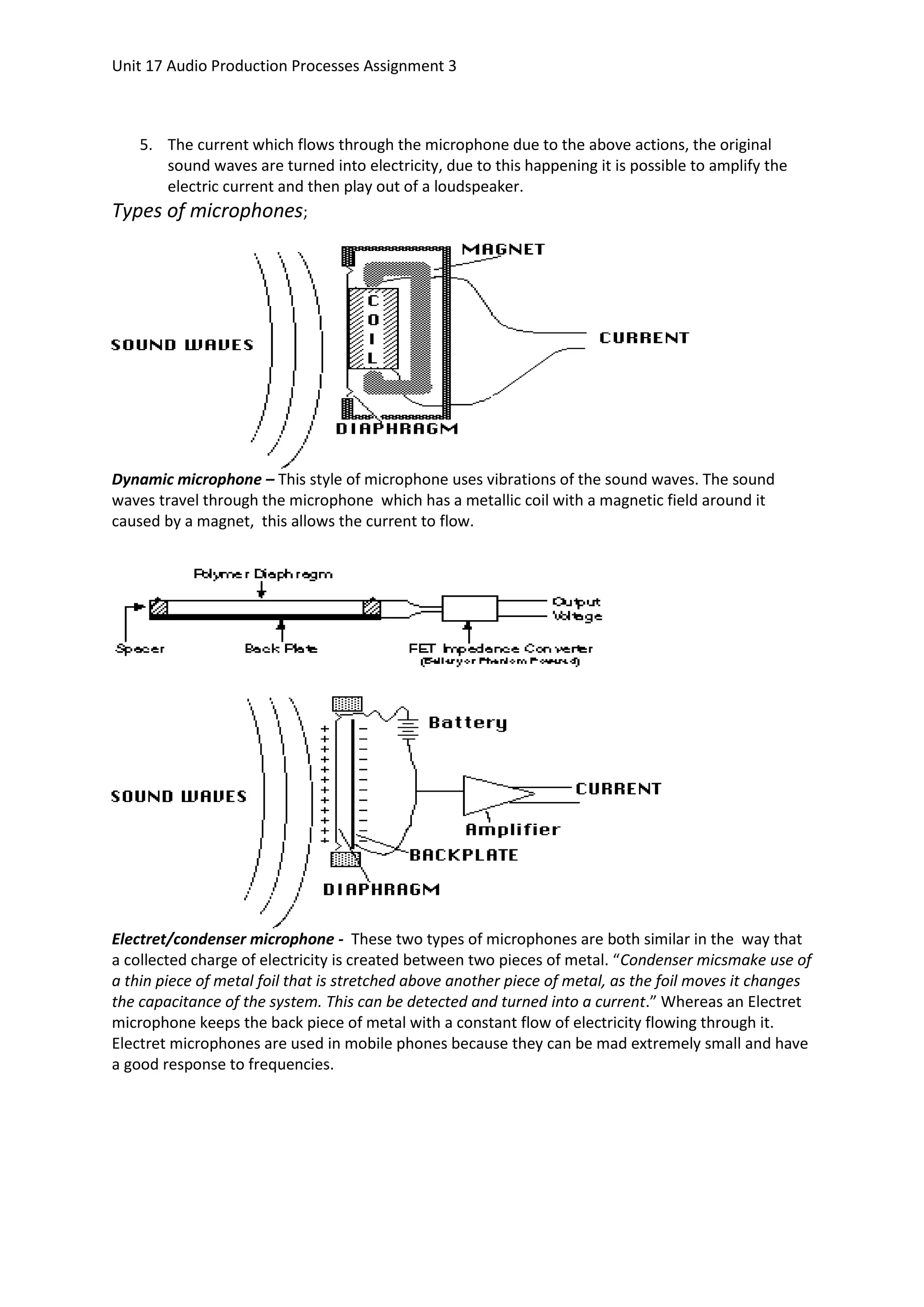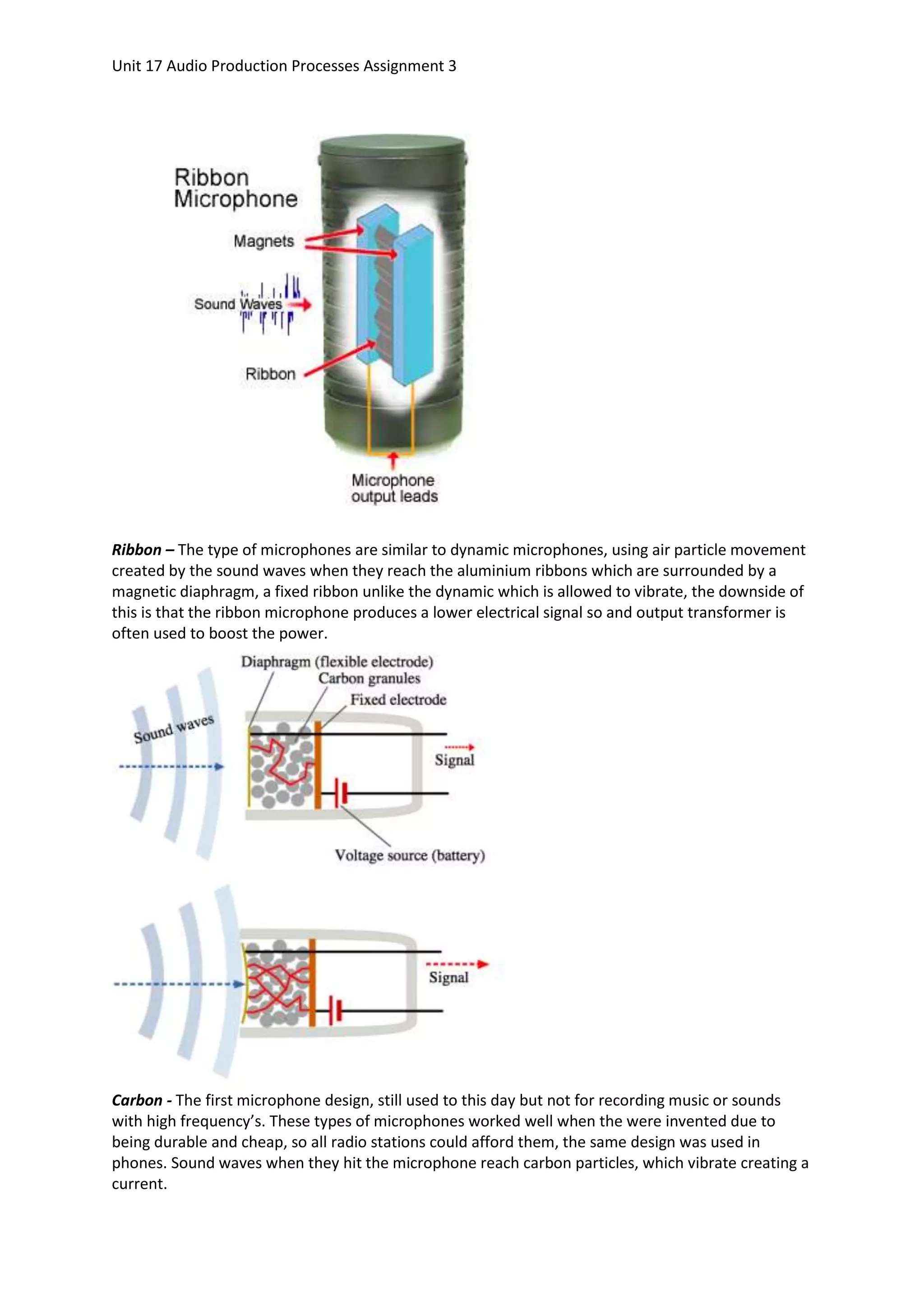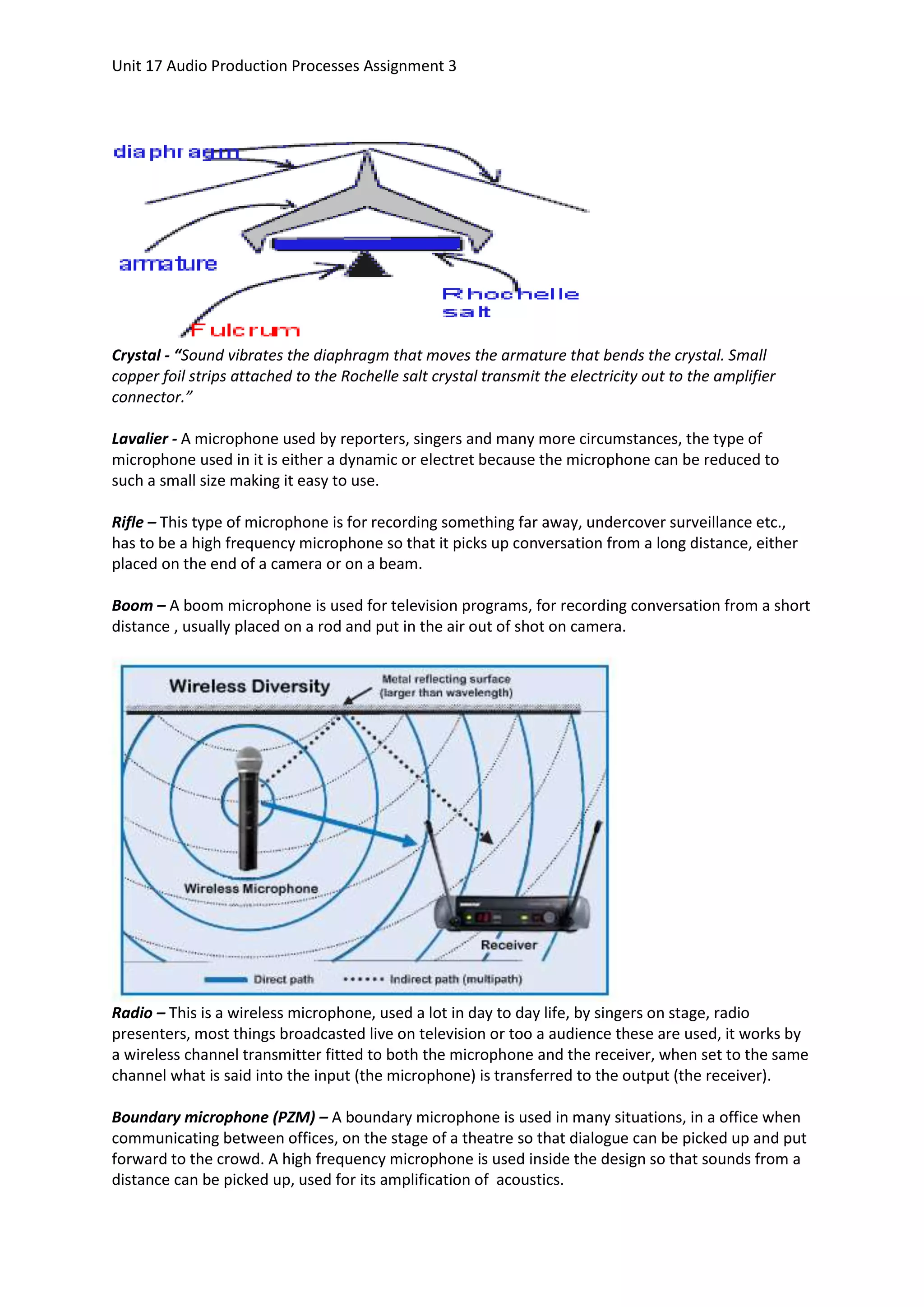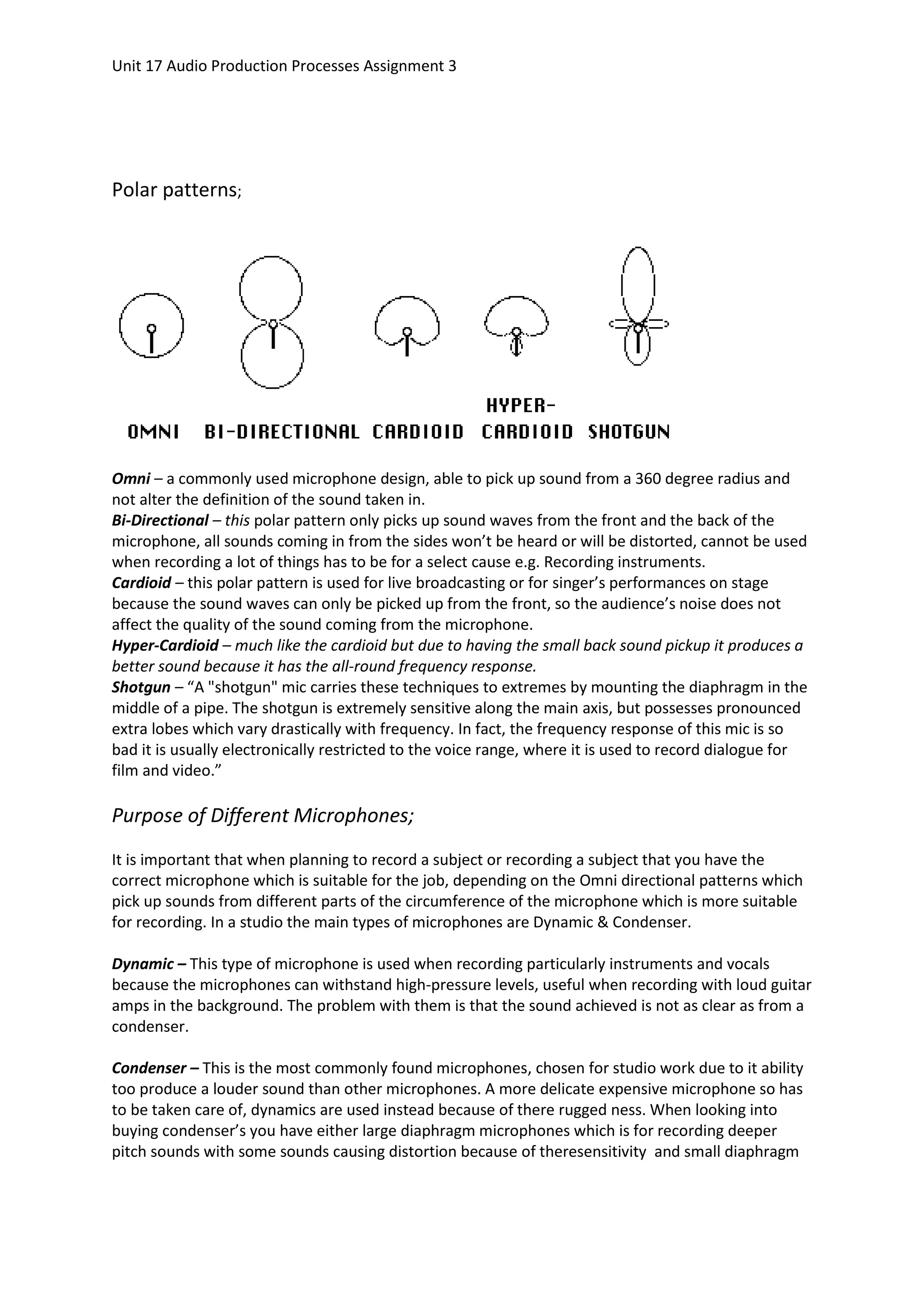The document summarizes the history and types of microphones. It describes how the first microphone was invented in 1876 and key developments like the ribbon microphone in 1931 and electric microphone in 1964. It then explains how microphones work by transforming sound waves into electrical signals. The main types of microphones are described - dynamic, condenser, ribbon, carbon, crystal - along with their characteristics. Polar patterns like omni-directional, bi-directional and cardioid are also covered. The document concludes by discussing the purpose of different microphones and their appropriate uses.
